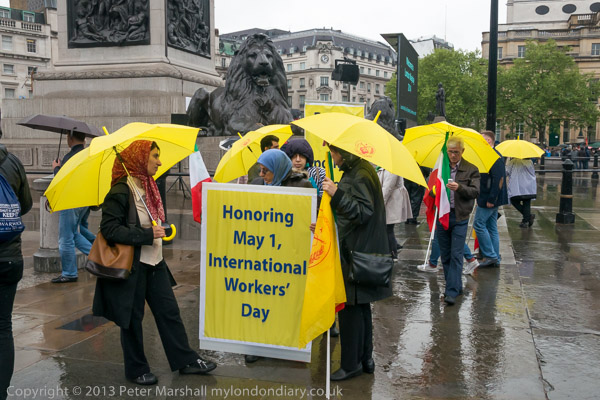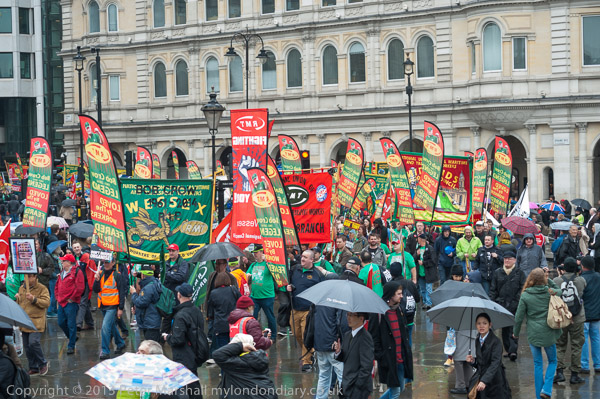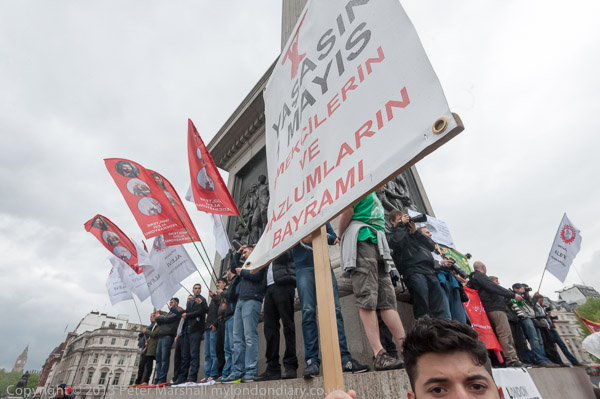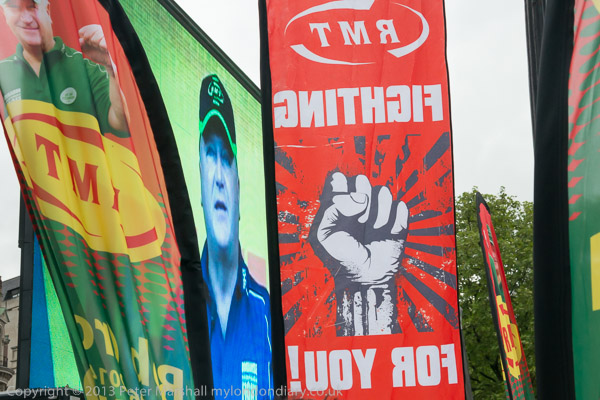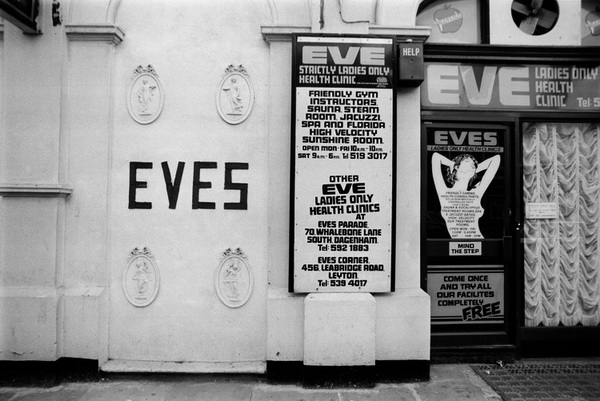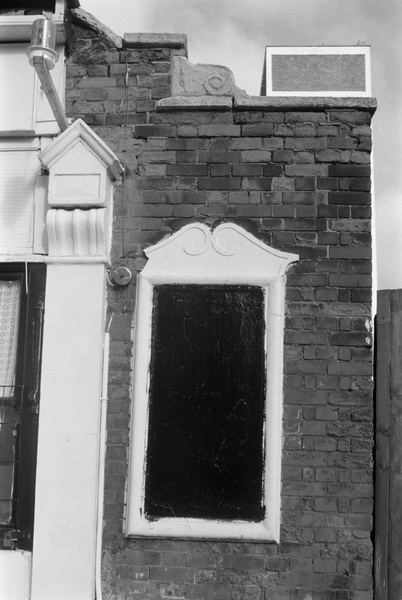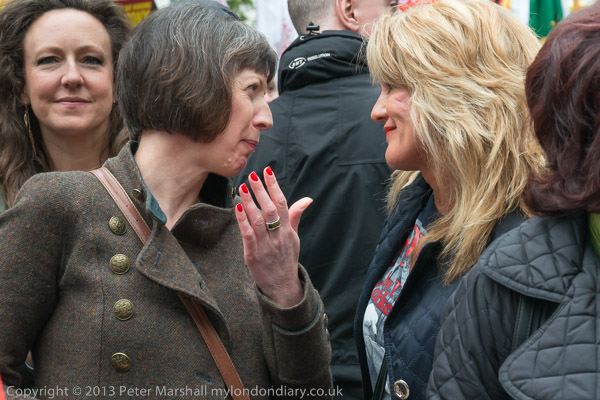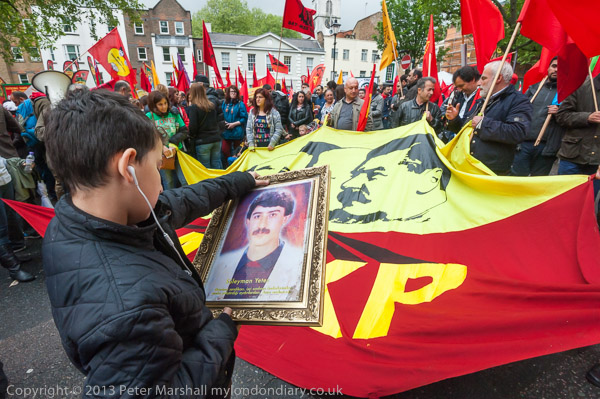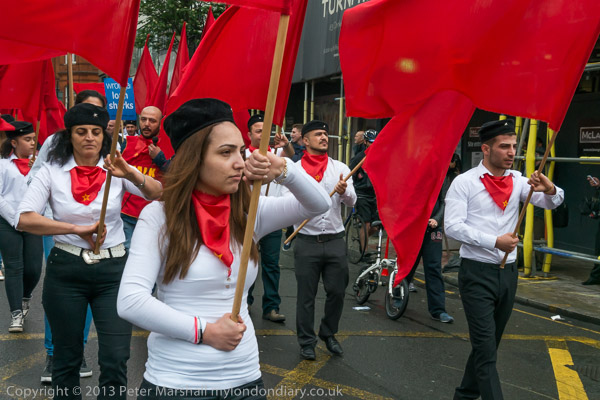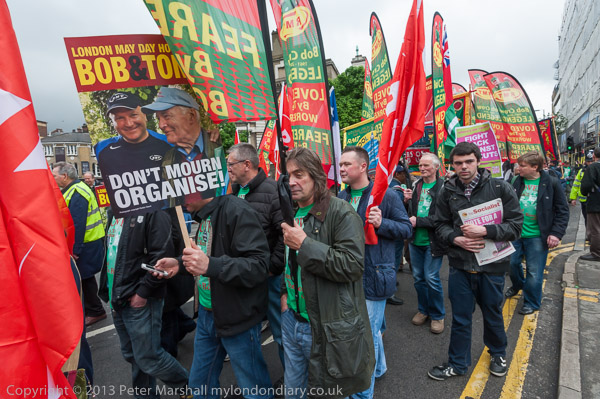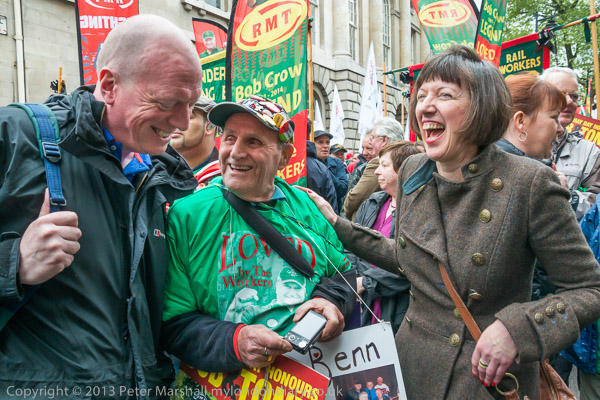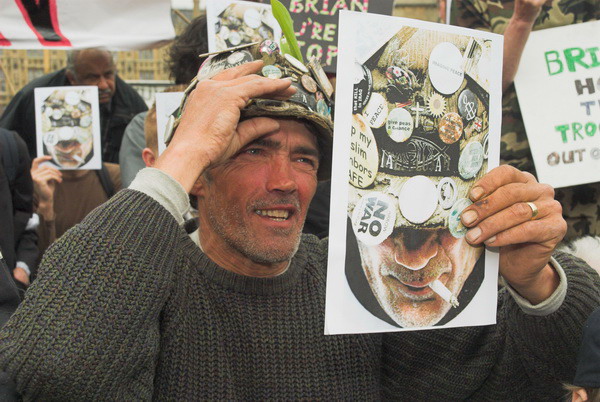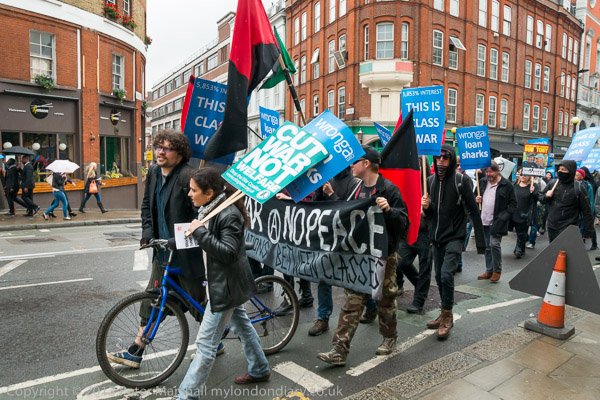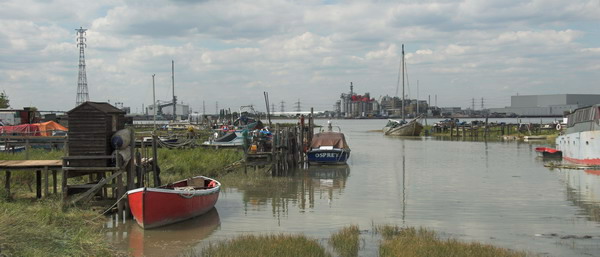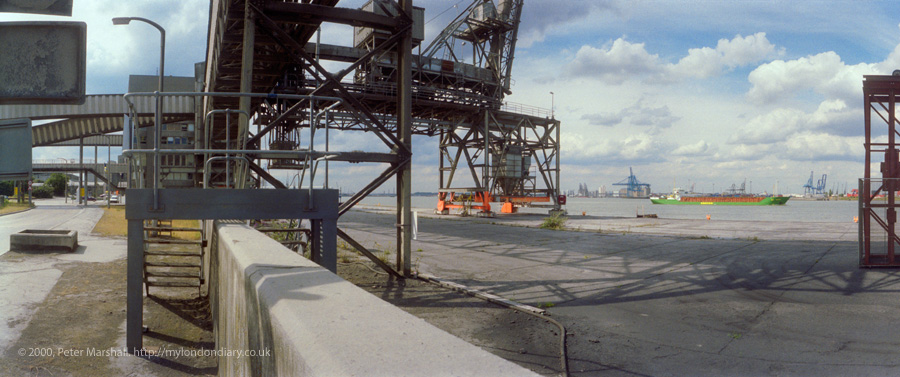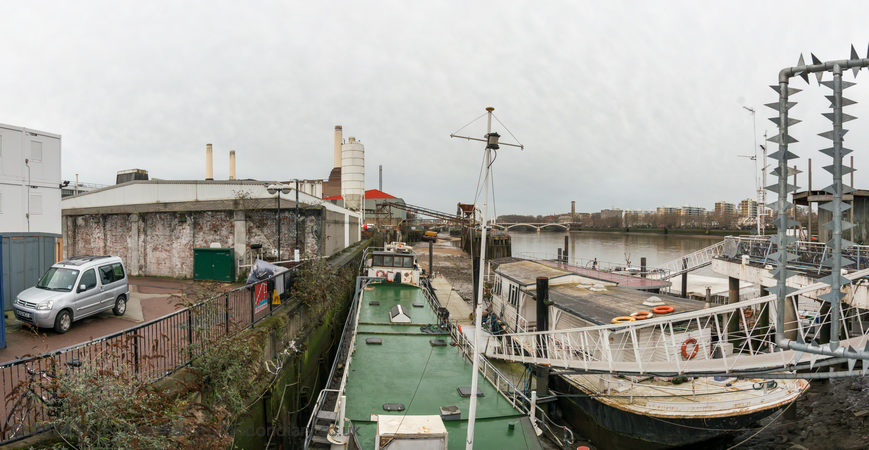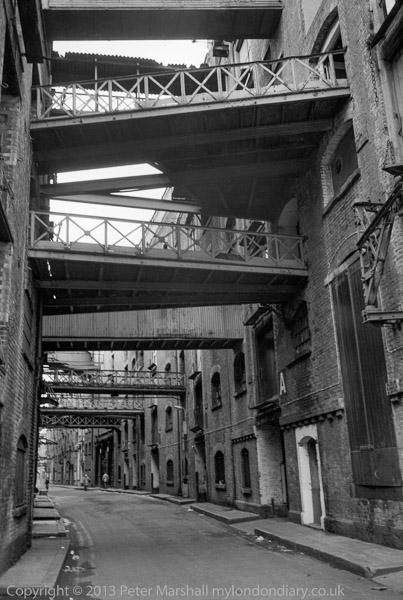
Shad Thames, 1981
This weekend there is a festival taking place in Shad Thames, though I doubt if I will have the time to go there, and to do so always makes me feel a little sad. Though I wish the Shad Thames Area Management Partnership (STAMP) and the Shad Thanes Resident’s Association and their Local Eyes Festival well, I can’t help feeling that the love for Shad Thames really came perhaps over thirty years too late.
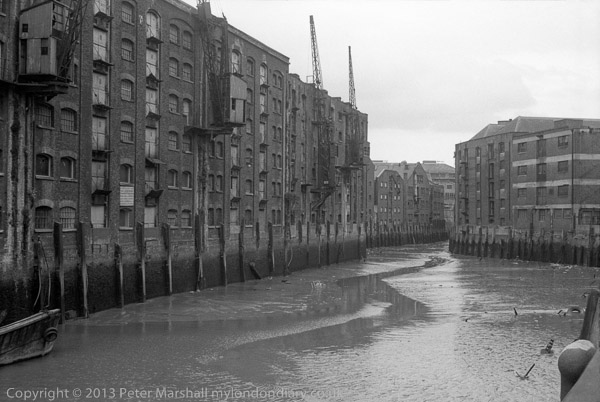
St Saviour’s Dock, 1980
Shad Thames, like the rest of London’s Docklands, used to be completely off the radar for most Londoners, even though you could glimpse it from Tower Bridge. There was indeed a sense that even if there were no fences or walls the general public were not welcomed, and it looked – and was while it was still a working area – a rather dangerous place.
It’s perhaps hard to remember when it is now a tourist trap, that back in the 1970s and 1980s it hardly got a mention in even the more adventurous of the tourist guide books. Access to the south bank of the Thames east of London Bridge was then pretty limited, with no riverside walks and it was certainly not regarded as a desirable area to live. Few would have dared to go there at night.
Disused warehouses became homes for artists, inhabited by a Who’s Who of British artists, most of whom were forced to leave the area after a disastrous fire at Butler’s Wharf in 1979 alerted the authorities to their semi-official presence and the fire risk they posed, particularly as many were living in their studio spaces.
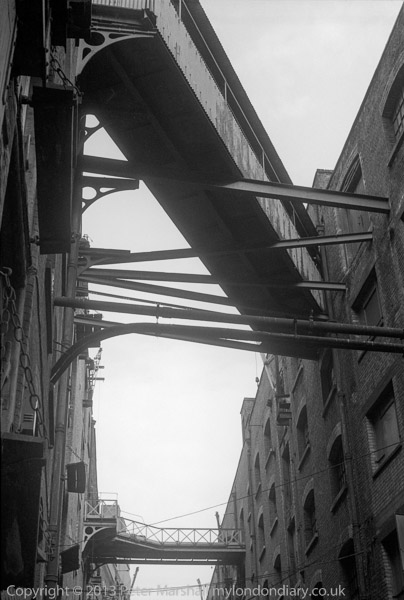
Shad Thames, 1980
I first went there shortly after the fire in 1980, when plans were being made to turn the area into something that one local councillor described as “like a zoo where you come to gawp at the jet set” with Terence Conran taking the lead in a scheme described by Southwark Notes as “The perfect plonking down overnight of the Conran dream. Timeless and spectacular with a winter Dickens chill and fog off The Thames but nary a boat to be seen. Just the clanking of coinage and the rustle of 20’s” and by the perpetrators as ‘a combination of luxury apartments and offices and to make it a gastronomic destination‘.
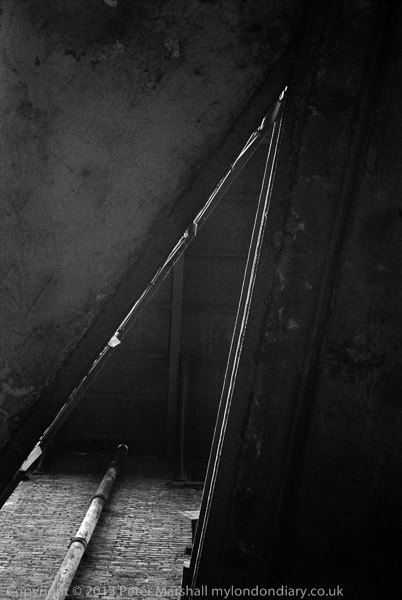
Shad Thames, 1980
Although the area still retains many of the original buildings (though some are just façades) much of the detail that gave the area and the street Shad Thames in particular with its many seemingly chaotic bridges across the narrow street between the tall buildings its character was taken away, in part replaced with bland replicas. Replica is far too kind a word, as no attempt seems to have been made to reproduce the originals and their variety. Poor pastiche would be more accurate.
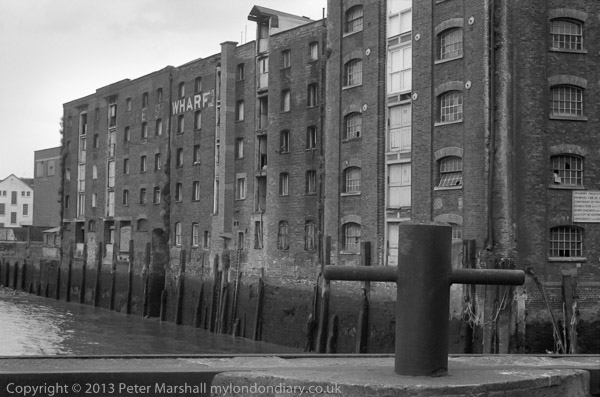
Reed’s Wharf, 1980
Recently I put together a small book of some of my pictures from Southwark and Bermondsey taken in 1974-84. Much of it is work that I first published on line in small images on the web site ‘London’s Industrial Heritage‘ around 15 years ago, and some has been exhibited a few times in various places. I wrote more about it here a few weeks ago where you can see a preview of the book and a link to buy it as a PDF or a print version.
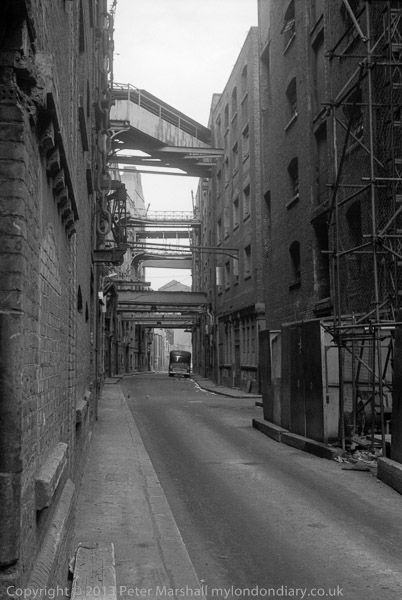
Shad Thames 1980
If you are going to Shad Thames for the Local Eyes Festival, you may like to download a copy of the PDF of ‘Southwark and Bermondsey’ and take it with you on your tablet or notebook and see something of what has been lost. Perhaps then ‘Local Eyes‘ will cry with mine. Though of course there are still things that remain and are worth groups like the Shad Thames Resident’s Association fighting to keep.
